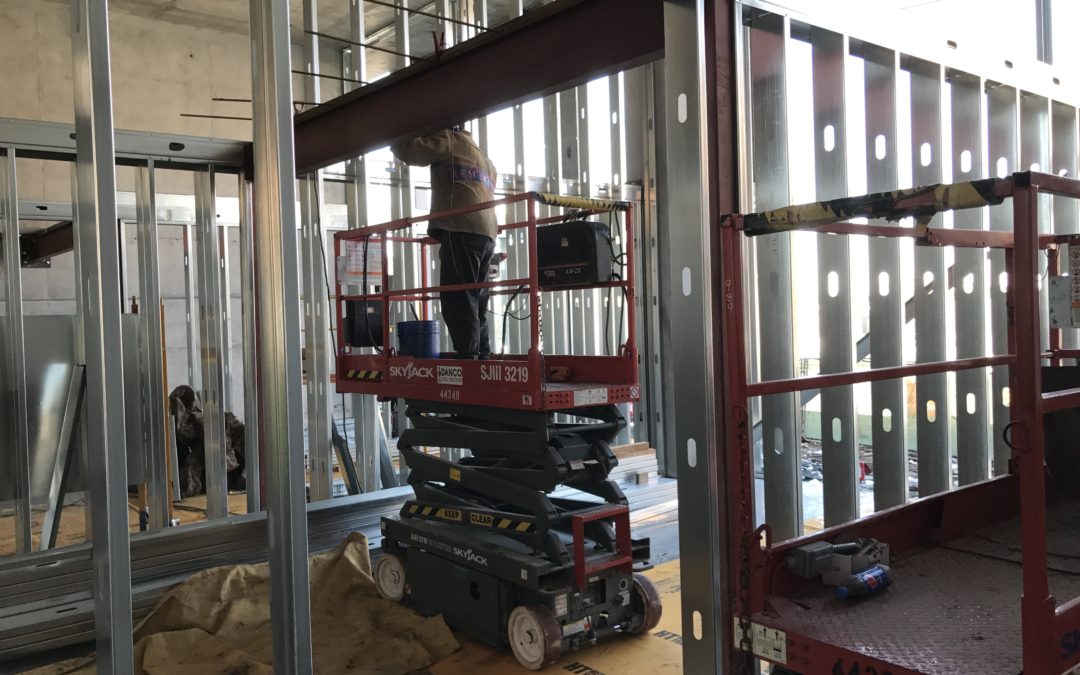It’s public information that metal part costs have elevated dramatically over the past six months, primarily on the again of commodity costs rising for each BOS and EAF manufacturing routes, and elevated demand in China. Many mills have been buying and selling within the purple. Clearly, costs wanted to rise, however the scale of the will increase has been alarming and sadly each time metal costs go up it’s front-page information. However, when different supplies enhance their costs by comparable ranges, it all the time appears to go underneath the radar. It’s additionally price remembering that there’s a lot of metal in a concrete body and rebar costs have rocketed too.
Although the uncooked materials makes up a comparatively small proportion of a steel-framed multi-storey constructing’s total price, lower than 5%, I’m positive a whole lot of price plans are being revised as we converse. This may lead to extra delays of buildings being launched for development, additional exacerbating the discount in total work, which we’ve been experiencing since Brexit and COVID-19 loomed giant. The BCSA lobbied very exhausting for extensions to furlough for this era six months in the past with BEIS, and many people are utilizing this facility. Economists are predicting inflation will enhance over the subsequent two years, presumably as much as 4%, and that can trigger additional issues to the price of buildings. It’s essential that pointless waste incurred within the means of constructing within the UK is diminished to offset a few of these will increase which can be inevitable.
Over the final yr there was an amazing development in curiosity in ‘carbon’, with shoppers demanding comparability checks of the carbon footprint of a constructing created from differing supplies. Steel has achieved nicely within the comparisons, however not as nicely it ought to. Unfortunately, when individuals have began to do comparisons they’ve focused on the ‘cradle to grave’ embodied carbon of the constructing, which doesn’t take account of the restoration, re-use and extra importantly the recycling of supplies at finish of life. The British Standards consult with this uncared for a part of the equation as ‘Module D’. If the development trade was making an allowance for Module D, together with the embodied carbon of manufacture, Modules A1-A3, the embodied carbon issue for BOS steelwork can be diminished within the order of 65%.
Other supplies do not need pretty much as good a message for finish of life restoration, re-use and recycling, so ignoring Module D makes the entire means of embodied carbon comparability of constructing supplies flawed and grossly unfair to BOS manufacture. EAF manufacture advantages from metal recycling, however these figures should not expressed of their Module D worth as they’re already included of their embodied carbon elements for Modules A1-A3. The BCSA is lobbying exhausting for development professionals to take Module D into consideration in such embodied carbon comparisons. The recycling and re-use of fabric is without doubt one of the cornerstones of sustainable pondering and the round economic system. Our trade has been recycling metal efficiently for a few years and the size of it’s astonishing, within the order of 95% to 99%. Simply put, not making an allowance for recycling and re-use in embodied carbon comparisons is like not taking gravity into consideration when designing an aeroplane!
The put up President’s Column: February 2021 appeared first on BCSA.

